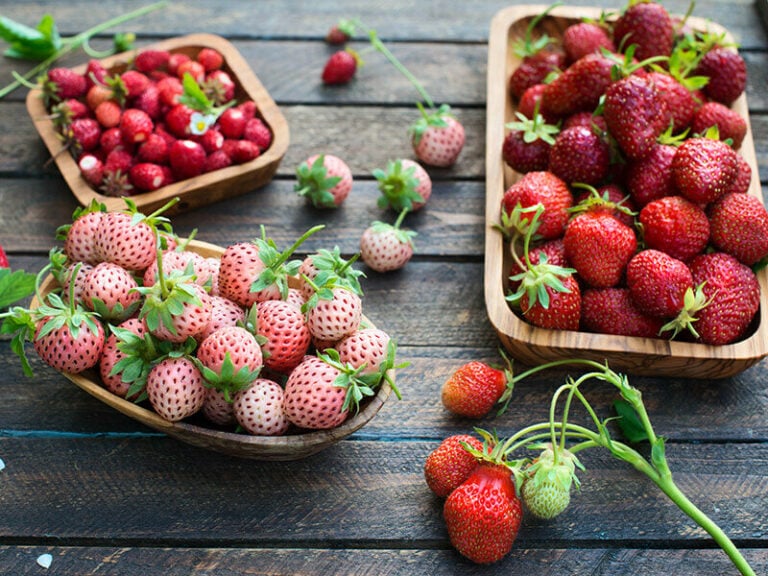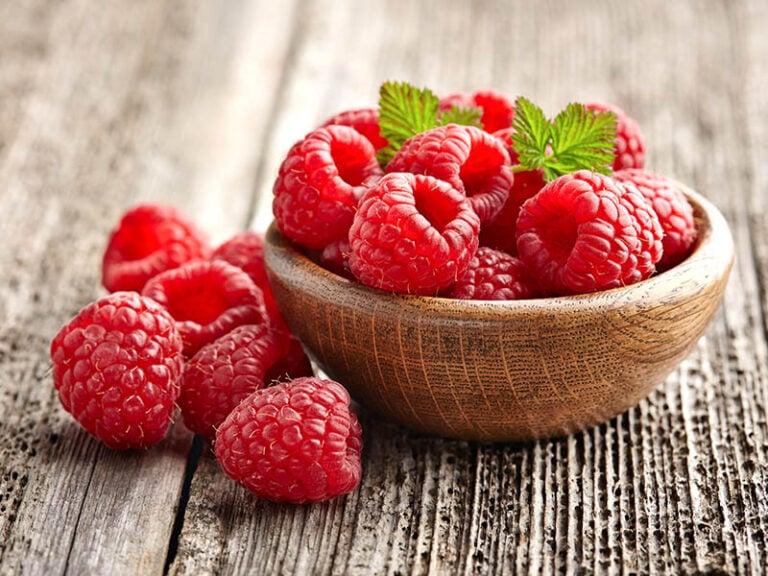When are raspberries in season? Vividly crimson, exceedingly juicy, and delicate, raspberries are a real summer treat. They are, to many people, the best berry of them all, and I cannot disagree with that!
When you can get your hands on the freshest and tastiest fruits, you can use them in your recipes and take your taste buds on a fabulous trip. Moreover, raspberries are an ideal fruit to make several summer recipes for your children.
If you plan to grow your own gardens, you might be wondering whether the perfect time to harvest the fruits can meet your expectations. This article will tell you when these little fragile berries are at their best.
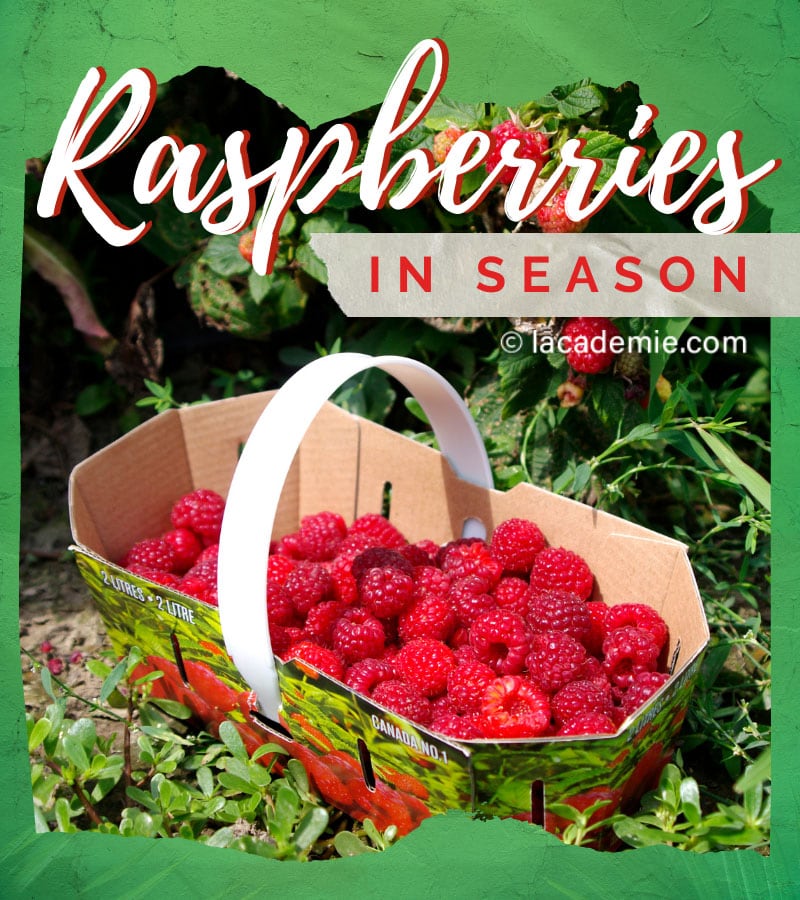
Quick Fact About Raspberries
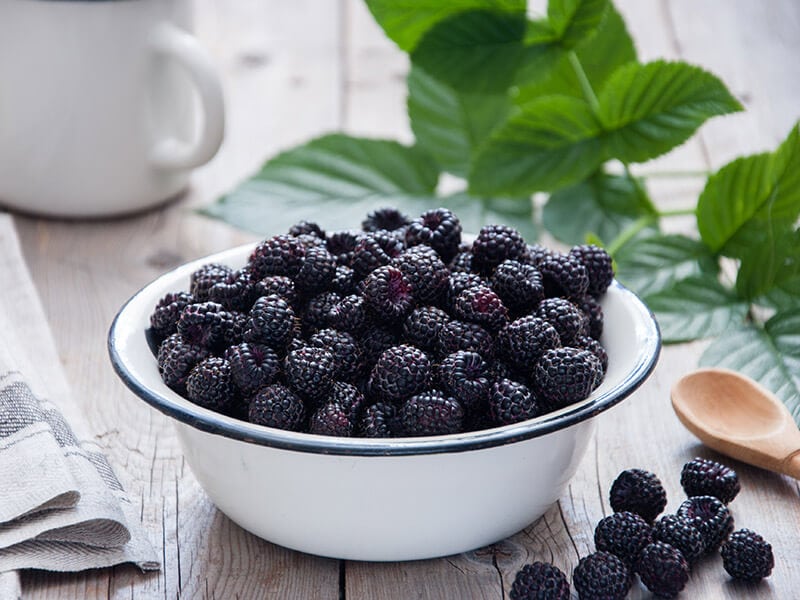
Raspberries belong to the genus Rubus in the rose family. Since this botanical family is also home to strawberries, people often compare raspberries with strawberries. These edible fruits have a sweet juicy taste with a tart undertone and rich colors.
There are over 200 variants of raspberries grown across the world (1). However, the most commonly grown is red raspberries, whose subspecies are native to Europe and North America.
An individual raspberry interestingly consists of 100 tiny drupelets. While mostly recognized by their red hue, raspberries are, in fact, available in other cheerful shades such as yellow, red, purple, or black.
The thing is, many people often confuse the black variety with blackberries for their similar appearance. Yet, they’re two different things, although quite closely botanically related.
Raspberries – a fruit beginning with an R letter, are ideal for being consumed fresh, frozen, or turned into jams or other dishes.
Nevertheless, these delightful fruits have a limited shelf life. Therefore, it’s best to eat or use them within days after harvesting/purchasing them to enjoy their prime quality.
If you want to grow a productive garden of raspberries, this video is a great place to start.
When Are Raspberries In Season?
The season of raspberries varies across the regions and the varieties. Here is the general seasonal calendar for the leading raspberry-growing areas and the main varieties.
Region
Raspberry – a common kind of fruit that is commercially and widely grown throughout America. However, most of the cultivation takes place in three states: Washington, California, and Oregon.
California is the nation’s leading raspberry-producing in both red and black varieties. Blackberry peak season is generally shorter than their red sibling, which often spans for around 2-3 weeks.
In addition, their season also kicks off earlier than the red varieties, normally from July.
Raspberries grow fruits and ripen differently across regions. Here is a brief calendar of raspberry seasons in key raspberry-growing states:
| State | The peak season for raspberries |
| Washington | June – October |
| Oregon | June – September |
| California | May – November |
Varieties
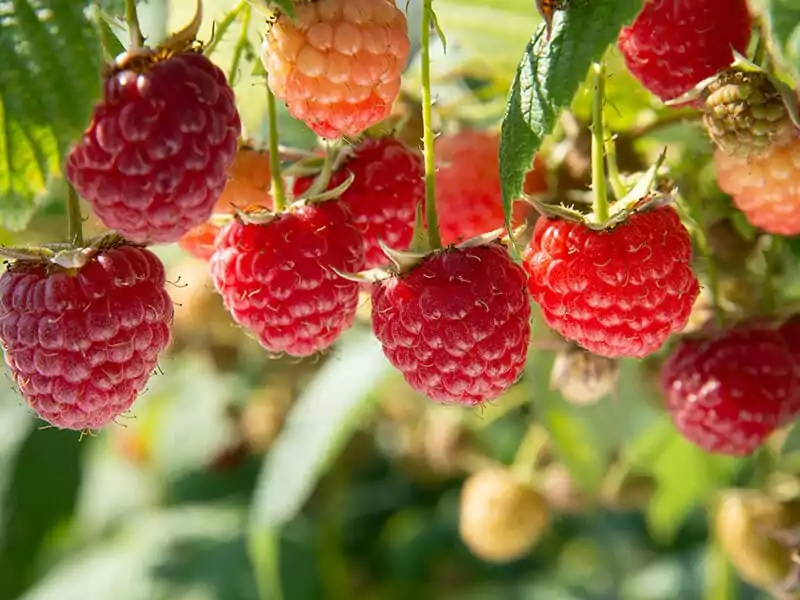
In general, raspberries fall into two main categories regarding seasoning: summer-bearing and ever-bearing varieties. The key distinction between them is that they bear fruits at different times of the year.
| Variety | The peak season for raspberries |
| Summer-bearing raspberries | Southern America: June or early MayNorthern America: July |
| Ever-bearing raspberries | Southern America: Late June or July until the winter frostNorthern America: Late July or August until it frosts |
Summer-Bearing Raspberries
These raspberries continue bearing the fruits from the canes from the previous year. In the Southern part of the country, they bear crops and ripen in June or early May. Those grown in the north of the US typically ripen in July.
Ever-Bearing Raspberries
Also known as autumn-bearing or fall-bearing raspberries, they bear fruits on new canes. They normally produce two crops each summer. Their peak season starts in late June or July and continues until it frosts in the south of the US.
These raspberries ripen and are ready for harvest later in the northern part, normally from late July or August until the winter frosts.
Let’s take a brief tour of a raspberry farm in Washington to learn about the harvesting process.
How To Buy The Best Raspberries
If you’re in front of a supermarket standoff, seeing punnets of raspberries competing for your attention, you know you’ll pick up some. Here are some tips you can apply to buy the freshest, tastiest raspberries:
Appearance
Choose the fully-ripened and plumb raspberries that look dry and firm. Avoid those fruits that have yet to ripe because they will not ripen after harvesting. In addition, you should skip those in dull colors or soft spots.
Skip berries that come with hulls (or receptacles), which indicates they’re underripe. Instead, well-ripened berries effortlessly come apart from the receptacles and have a cupped-shaped cavity in the middle.
Package
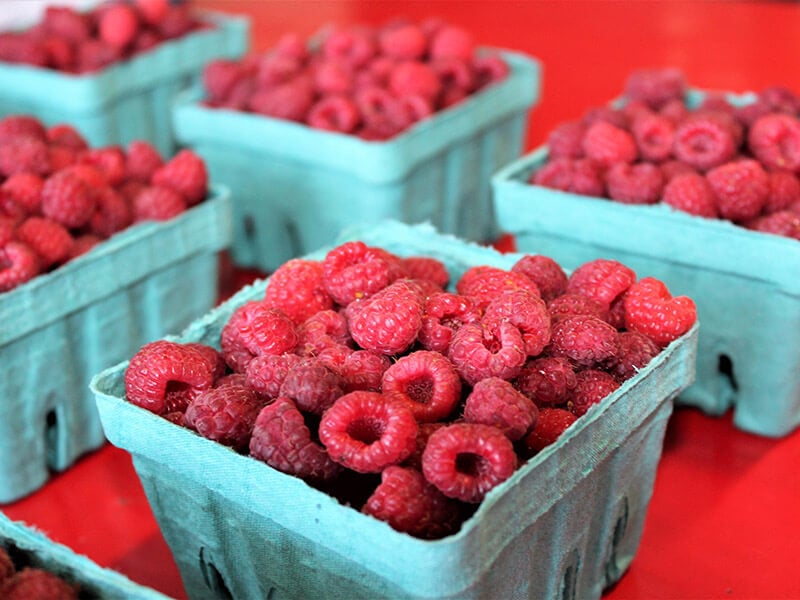
For pre-packaged raspberries, double-check for any juice stains, which show damaged, crushed fruits inside. If possible, take a look at the content inside, and skip those boxes with moldy, squishy berries.
In addition, there should be no berries sticking to the bottom liner. Those in the baskets are less likely to get molds as the stores often pack these berries just right before putting them on display.
The Best Place To Buy Raspberries
Here are the most common places where you can purchase raspberries from. I already rate them down based on the freshness of the raspberries they can offer.
U-Pick Farm
Raspberries have a very short shelf life (normally, 2-3 days in the fridge). That’s why you’ll want to buy them when they are freshest – straight from the branches on the farm.
The Farmer’s Market
A farmer’s market is your second best choice if you can’t make it to the farm. Yet, the sellers there normally do not keep their raspberries at a cool temperature. Therefore, you should pick them up in the early morning so you’ll have more time to store them.
Supermarket Or Grocery Store
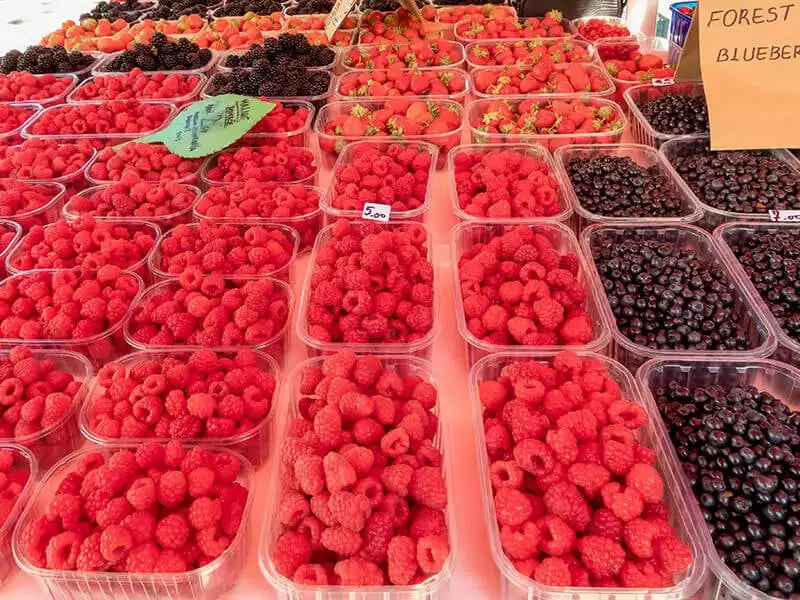
Raspberries don’t store well. Most raspberries in these places are a bit underripe (for longer shelf life). In addition, also to extend the shelf life, the sellers usually treat raspberries with fungicides to prevent molds (2).
For this reason, you might notice store-bought berries last slightly longer than those hand-picked from farms or farmer’s markets.
How To Pick The Best Raspberries From Farm?
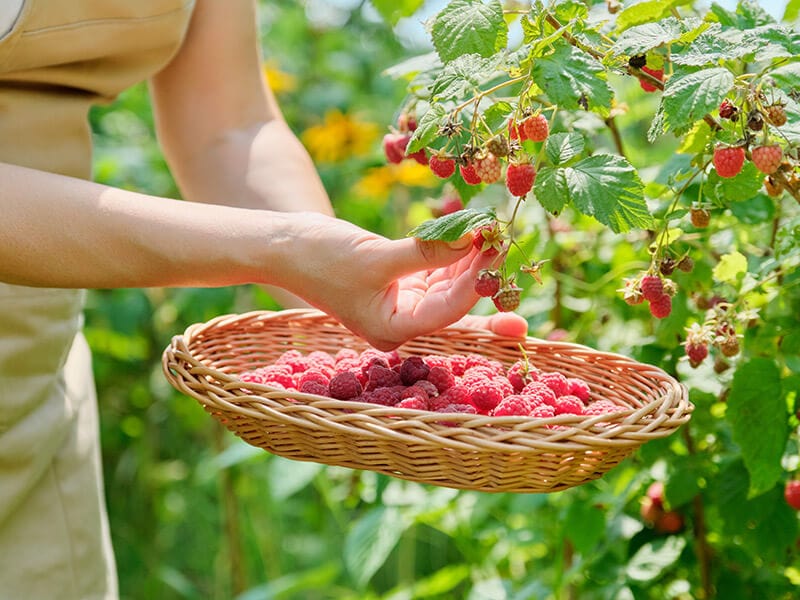
In case you’re harvesting your raspberries or from a farm, keep in mind these tips so you’ll only pick the ripe and best berries:
Tool
Visit the raspberry farm or harvest your own raspberries this year? Make the most of your trip to the garden by bringing along these essentials for picking raspberries:
- Before driving to the farm, call the farm’s owner first. The change in weather or the number of pickers can affect the availability of raspberries for harvesting.
Therefore, you may want to make sure that there are still raspberries for you to pick before arriving at the farm.
- Besides, it’s best to harvest raspberries in the early morning. Early birds can avoid the crowd later in the day, and the weather is more pleasant to be outside.
On top of that, there are normally designated areas and limited quantities for picking daily at many farms. This means that if you arrive late, chances are there is no more picking at that farm.
- Wear thin gloves when picking raspberries to protect your hand from the tiny thorns in the raspberry bramble.
- The picking containers should be hard, wide, and shallow. You should not lay your berries more than a few deep or pile them up against each other. Instead, use multiple small containers to store all of the freshly-picked berries.
- Bring basic necessities that will help you’re comfortable picking raspberries. Wear a hat and sunscreen to protect you against the brutal sun. Also, bring along a bottle of water and insect repellent.
Harvesting
Picking raspberries, whether in a U-pick farm or your own garden, is rewarding and ensures that you’ll enjoy the freshest fruits possible. Here are some picking tips you can apply after arriving at the garden.
- Always choose fully-ripen raspberries. Raspberries don’t continue to ripen after harvesting, which means that if they don’t look ripe, they will never be. Most importantly, they will never reach their peak of sweetness and deliciousness.
- Grab the berry and gently tuck it. Fully-ripe berries detach from the core very easily, with their cores still on the plants, not the fruits.
- The general rule applied to raspberries of all hues: Choose the fruits with a darker shade.
- Pick the fruits with both hands to avoid damaging the fruits and branches. Hold the branch with one hand and gently pluck the berry using the other.
- Don’t place plenty of berries inside one container. They are soft, fragile, and thus easily bruised or squashed when stacked on each other.
- After spotting a ripe berry, don’t quickly move on to other areas. Those surrounding that berry are likely to grow and ripe at the same time, so don’t skip them.
- Don’t step over raspberry bushes as you can easily damage them.
- Start your harvesting journey at the end of the row, as opposed to what people normally would. You’re more likely to discover more flavorsome fruits.
- In addition, don’t miss out on the inside or lower part of the bushes. Take your time to look inside or bend over as you’re likely to see an abundance of unexplored raspberries ready to harvest.
Storage After Picking
Storing after picking is crucial so you can keep your berries fresh for longer. Check out the tips below for proper raspberry storage.
- Avoid leaving your fruits too long under the sun or in the heat. If you’re harvesting a large amount, place the picked fruits in the shade of a tree or shed.
- Immediate cooling is important within a few hours after harvesting the fruits.
This introduction shows you more raspberry useful picking tips that you can apply when on the farm.
Tips For Keeping Your Raspberries Fresh
The general rule is to eat raspberries as soon as you purchase or pick them. Yet, below are some tips and tricks to properly store your raspberries when you have several batches of them. Let’s dive right in!
How To Store Raspberries In The Fridge
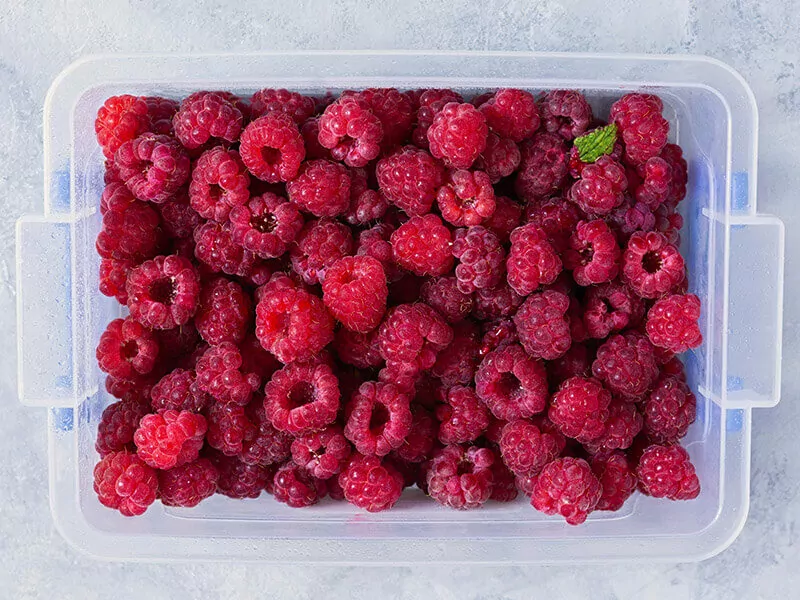
For short-term storage, you can choose to refrigerate your raspberries. Keep in mind that you should do so immediately after picking them up from the farm or buying them up from the store.
Step 1: Sort The Raspberries
Some sorting is necessary before tossing the berries into the fridge. Remove any crushed, moldy, squishy, or rotten fruits from the pack.
Step 2: Portion The Raspberries
If you have plenty of raspberries, do some planning. Just put enough raspberries you can in the fridge in a couple of days. The remaining raspberries should go into the freezer so they can last longer.
Step 3: Skip Cold Wash And Use White Vinegar Instead
Do not wash your raspberries because exposure to excess moisture can lead to premature spoilage. Instead, wash them right before eating or cooking, within a day or two.
However, you might want to submerge your berries in a white vinegar bath. This helps rinse off any pesticide residue or bacteria on the fruits and improve the shelf life.
To create a vinegar bath, add white vinegar and water to a large bowl at the 1-8 ratio. Then, add the raspberries into the solution and squish them for 1-2 minutes.
Next, transfer the berries into a colander and gently rinse them under the running water before patting them dry.
Step 4: Store The Berries In A Breathable Package
Not all the containers are ideal for holding your berries. Skip those airtight containers and go for any container that promotes air circulation, which typically has holes and slots.
Normally, the container that comes with the raspberries is fine to store your raspberries. However, if the original package broke or you lost it, replace it with something breathable to store your berries.
Therefore, it’s best if the container has some holes to allow the airflows – something identical to a colander, for example.
In addition, don’t cover up those holes near the lid. Berries need to breathe to last the longest possible, and suffocated ones are often spoiled faster than those stored inside a breathable container.
Line the box with a paper towel, which will soak excess moisture and prevent premature spoilage or mold growth.
Step 5: Store In The Fridge
Avoid placing these cheery berries in the veggie drawer as the temperature is too cold for them. The same goes with the back of your fridge, where the moisture can accumulate quickly.
The best place to place these berry containers is near the front of your fridge. Not only can you avoid the quick buildup of moisture, but the berries will also catch your eyes whenever you open the fridge. Therefore, you’re more likely to finish them before they’re rotten.
Instead, the temperature ideal for storing them is between 31°F to 32°F (3) . Don’t go for too cool a temperature as you risk freezing the fruits.
They require relative humidity levels between 90% to 95%. The ideal place to place them is in the front or center of the fridge.
How To Store Raspberries In The Freezer
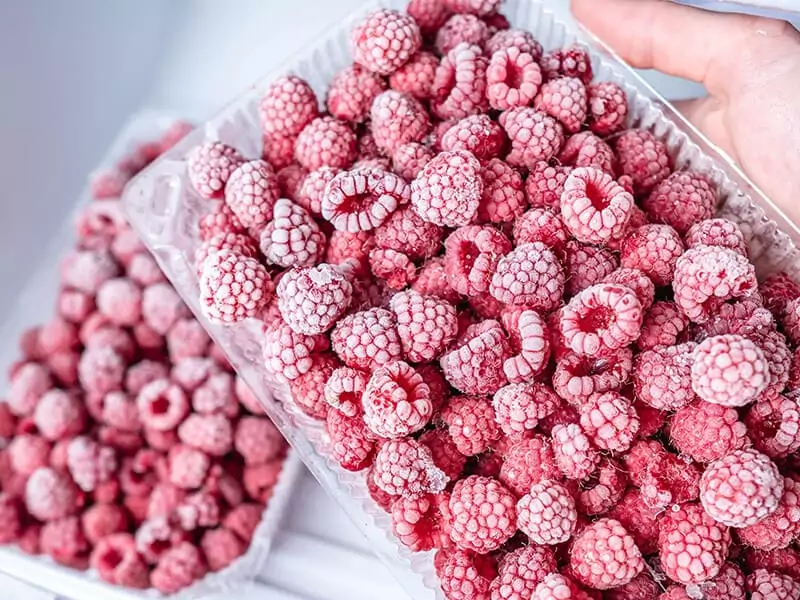
Due to its short shelf life, you’d better freeze raspberries if you have an abundance of them. Frozen raspberries can last between 12-18 months, so you can keep them at hand for cooking in the long term.
Step 1: Rinse The Raspberries
First, there are different ways to clean the raspberries to get rid of all the grime and dime coming with them from the gardens. But here is the simplest one: Put them in a basket and rinse them gently under running water.
Step 2: Drain Your Berries Thoroughly
Next, drain off the excess water to avoid premature spoilage. If there is still moisture in the berries, the fruits can clump together, and the chance of frost damage is higher.
After draining the water, take a further step and pat dry them with a towel to guarantee they’re completely dry and safe for storage.
Step 3: Place Them In A Baking Sheet Lined With Wax Paper
After gently rinsing and draining off the water from the berries, add wax paper to the baking sheet. The wax paper will prevent these fruits from clumping together.
Don’t try to crowd the baking sheet, as this will only ruin the fruits. You should only place a single layer of raspberries and ensure space between the fruits, so they won’t touch each other.
Step 4: Start The First Round Of Freezing
Flash-freezing your fruits prevents them from sticking to each other when in the freezer.
Freeze them for around 1-2 hours, or as soon as they get frozen, whichever comes first. Yet, this time can vary slightly, depending on the quantities of raspberries you put into the freezer and the engine’s strength.
Therefore, in the meantime, check the fruits every 30 minutes and stop the flash-freezing when they become hard and frozen completely.
Step 5: Continue To Freeze
Finally, transfer your frozen berries to freezer bags or containers and store them in the freezer.
I recommend labeling each container with the date that you start freezing. This way, you can always know which raspberries are frozen earlier and prioritize using them.
Follow this detailed guide on how to freeze raspberries and extend their shelf life.
Interesting Raspberries Recipes To Try
Raspberries are versatile fruits. They add sweetness, juiciness, and a touch of color to several dishes. Here are some of the most common ways to incorporate these delightful fruits into your recipes.
Yogurt Parfait
This healthy parfait is bursting with the fresh taste of raspberries. The yogurt also comprises decadent layers of granola, yogurt, and almond butter, which gives a creamy, sweet, savory mouthfeel.
Incredibly healthy and delectable makes for a perfect breakfast or a comforting snack.
Raspberry Crumble Bars
These crumble bars offer the sweetness of honey, earthy notes of oatmeal crust, and the tartness of raspberries. These are natural sweetness, so the dish is vegetarian and gluten-free. Baking this delightful treat only takes less than an hour.
These raspberry yogurt crumble bars are delectable with a touch of lemony flavor.
Chocolate Covered Raspberry Overnight Oats
Look for an energy-boosting breakfast? This indulgent yet healthy recipe with tart raspberries and creamy chocolate will get you out of bed in no time.
The dish is easy-peasy and only takes 5 minutes, so there’s zero pressure to prep in advance the night before.
Raspberry White Chocolate Mousse
Chocolate and raspberries are a match made in heaven. In this recipe, they team up for a refreshing tart-sweet flavor with a creamy mouthfeel. Leave it overnight, and you’ll wake up to a delicious breakfast in the morning.
This creamy, airy mouse is absolutely amazing and foolproof to try.
Benefits Of Eating Raspberries
Raspberries are an excellent source of vitamins, notably vitamin C, which promotes collagen production and skin health.
They are also rich in other antioxidants such as quercetin and ellagic acid, which protect your skin cells from free radical damage.
In addition, raspberries also benefit cardiovascular health thanks to the anthocyanins found inside the fruits.
The high fiber content also helps lower cholesterol levels and blood pressure. A study also found that raspberries’ rich source of antioxidants can help fight against breast cancer and other types of cancer. (4)
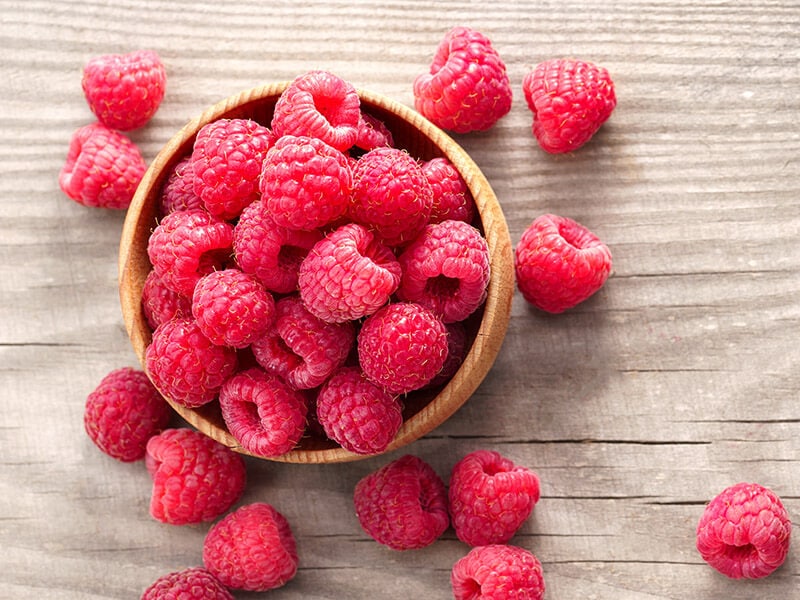
FAQs
Whether you’re getting fresh-from-the-farm or store-bought berries, you may want to browse through these most commonly asked questions below for more useful information.
Pick The Perfect Raspberry When It’s Time
While you can buy these cherry berries any time at the supermarkets, raspberries are at their prime when they’re in season. So it’s best to know when’s the best time to harvest or purchase them and how to choose the ripe, freshest, and perfect berries.
Tell me your experience with picking or buying raspberries! Or, tell me your further concerns right below, and I’m happy to discuss them with you. And click on the share button if you think this guide would be useful for anyone who loves raspberries like you.
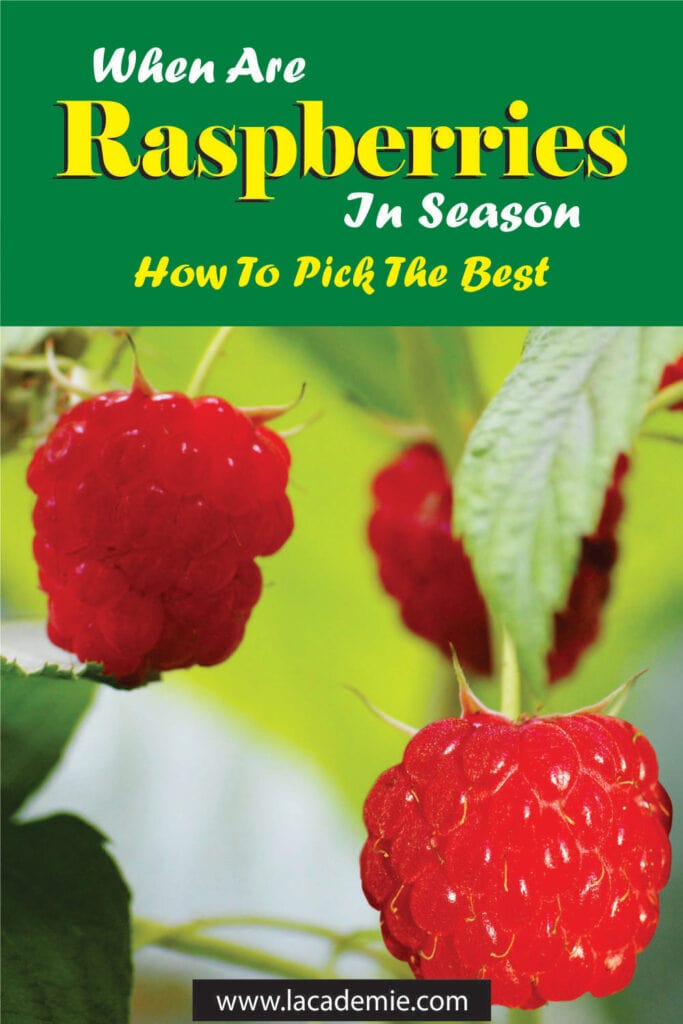
References
- web.extension.illinois.edu. 2022 About Raspberries.
- www.canr.msu.edu. 2014. Botrytis gray mold control in strawberries and raspberries.
- hortnews.extension.iastate.edu. 2011. Harvesting and Storing Small Fruits.
- www.medicalnewstoday.com. 2019. Health benefits of raspberries.

